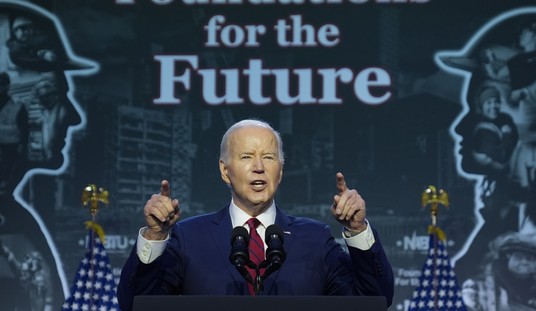So far today, we’ve written about the Middle East, the War on Terror, the media, and Rudy Giuliani. Astonishingly, in an op-ed found via Instapundit, John Tierney, who along with Virginia Postrel are the New York Times’ token libertarians, ties all those themes together in a neat little bundle:
During the past decade I’ve seen hundreds, maybe thousands, of articles on suicide bombings, but I read to the end of just three of them, and that was only because I wrote them. Those bombings occurred in Baghdad and Kurdistan during the summer of 2003, when they were still a novel phenomenon in Iraq, but even then there was really nothing new to say.
As I intruded on grieving relatives at the scene and wounded survivors in hospitals, I didn’t see what good I was doing for anyone except the planners of the attack. It was a horrifying story, but it was same story as every other suicide bombing, from the descriptions of the carnage and the mayhem to the quotes from eyewitnesses and the authorities.
When the other reporters and I finished filling our notebooks, we wondered morosely if we could have done a service to everyone – victims, mourners, readers – by reducing the story to a box score. We all knew the template: number of victims, size of the crater, distance debris had been hurled, height of smoke plume, range at which explosion was heard.
There was no larger lesson except that some insurgents were willing and able to kill civilians, which was not news. We were dutifully presenting as accurate an image as we could of one atrocity, but we knew we were contributing to a distorted picture of life for Iraqis.
The standard advice to newly arrived journalists at that time was: “Relax. It’s not nearly as bad here as it looks on TV.”
Correspondents complained that they’d essentially become cop reporters, and that the suicide bombings took so much of their time that they couldn’t report on the rest of the country. They were more interested in other stories, but as long as the rest of the press corps kept covering the bombing du jour, that was where their editors and producers expected them to be, too.
You could argue that their bosses were simply responding to their audiences’ visceral urges. Everyone rubbernecks at car accidents; cable news ratings soar when there’s a natural disaster or a heinous murder. But how much shock value or mystery is there anymore to suicide bombings?
How intrigued are people by murders when the motive, the weapon and the murderer’s fate are never in doubt?
I suspect the public would welcome a respite from gore, like the one that New Yorkers got when Rudolph Giuliani became mayor. He realized that even though crime was declining in the city, people’s fears were being stoked by the relentless tabloid and television coverage of the day’s most grisly crime. No matter how much the felony rate dropped, in a city of seven million there would always be at least one crime scene for a live shot at the top of the 11 o’clock news.
Mr. Giuliani told the police to stop giving out details of daily crime in time for reporters’ deadlines, a policy that prompted outrage from the press but not many complaints from the public. With the lessening of the daily media barrage, New Yorkers began to be less scared and more realistic about the risks on their streets.
I’m not advocating official censorship, but there’s no reason the news media can’t reconsider their own fondness for covering suicide bombings. A little restraint would give the public a more realistic view of the world’s dangers.
Just as New Yorkers came to be guided by crime statistics instead of the mayhem on the evening news, people might begin to believe the statistics showing that their odds of being killed by a terrorist are minuscule in Iraq or anywhere else.
Terrorists know the numbers are against them and realize that daily bombings will not win the war. All along, their hope has been to inspire recruits and spread general fear with another tactic, the bombing as photo opportunity. For some reason, their media strategy still works.
Gee–imagine that.









Join the conversation as a VIP Member